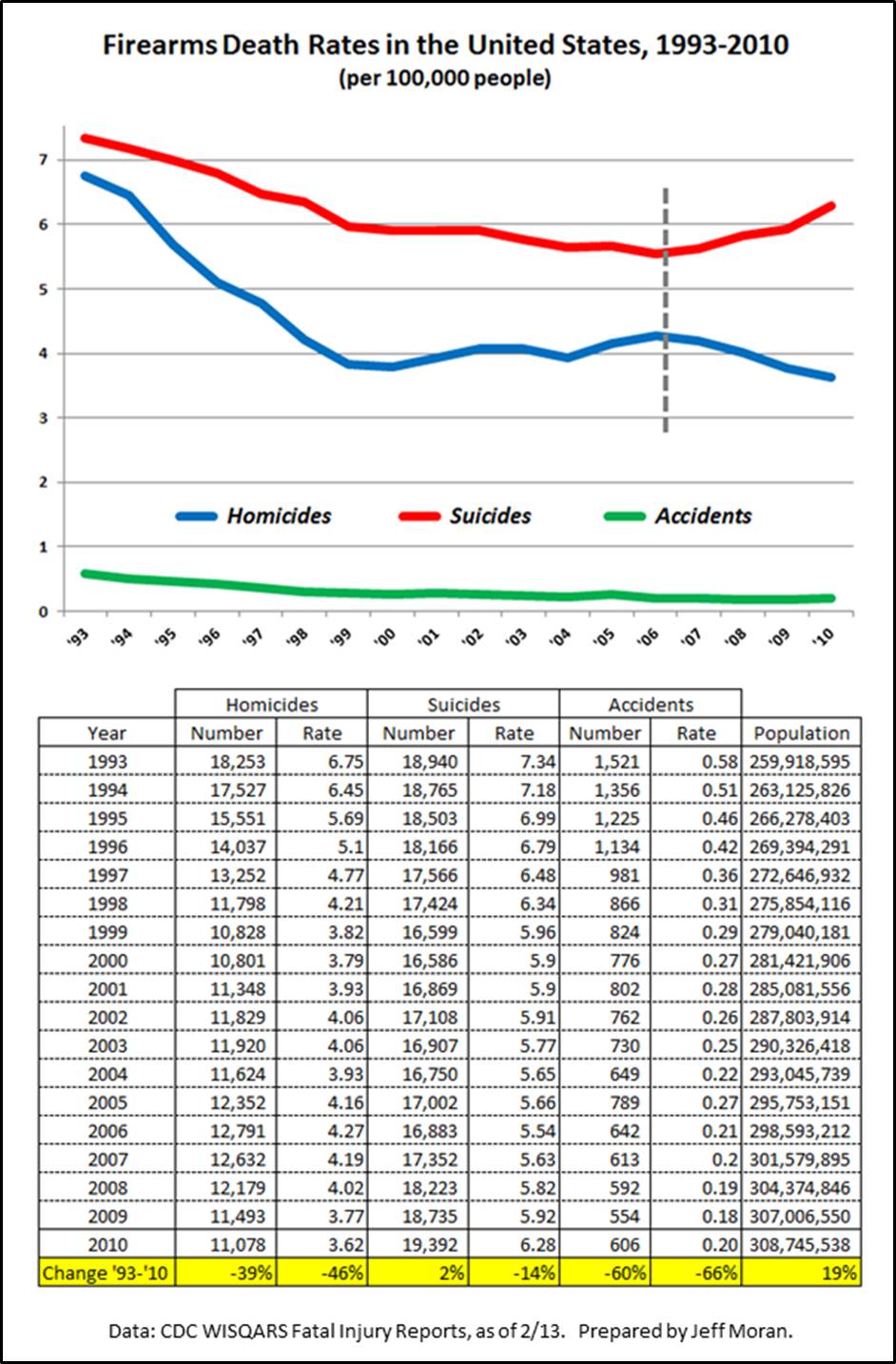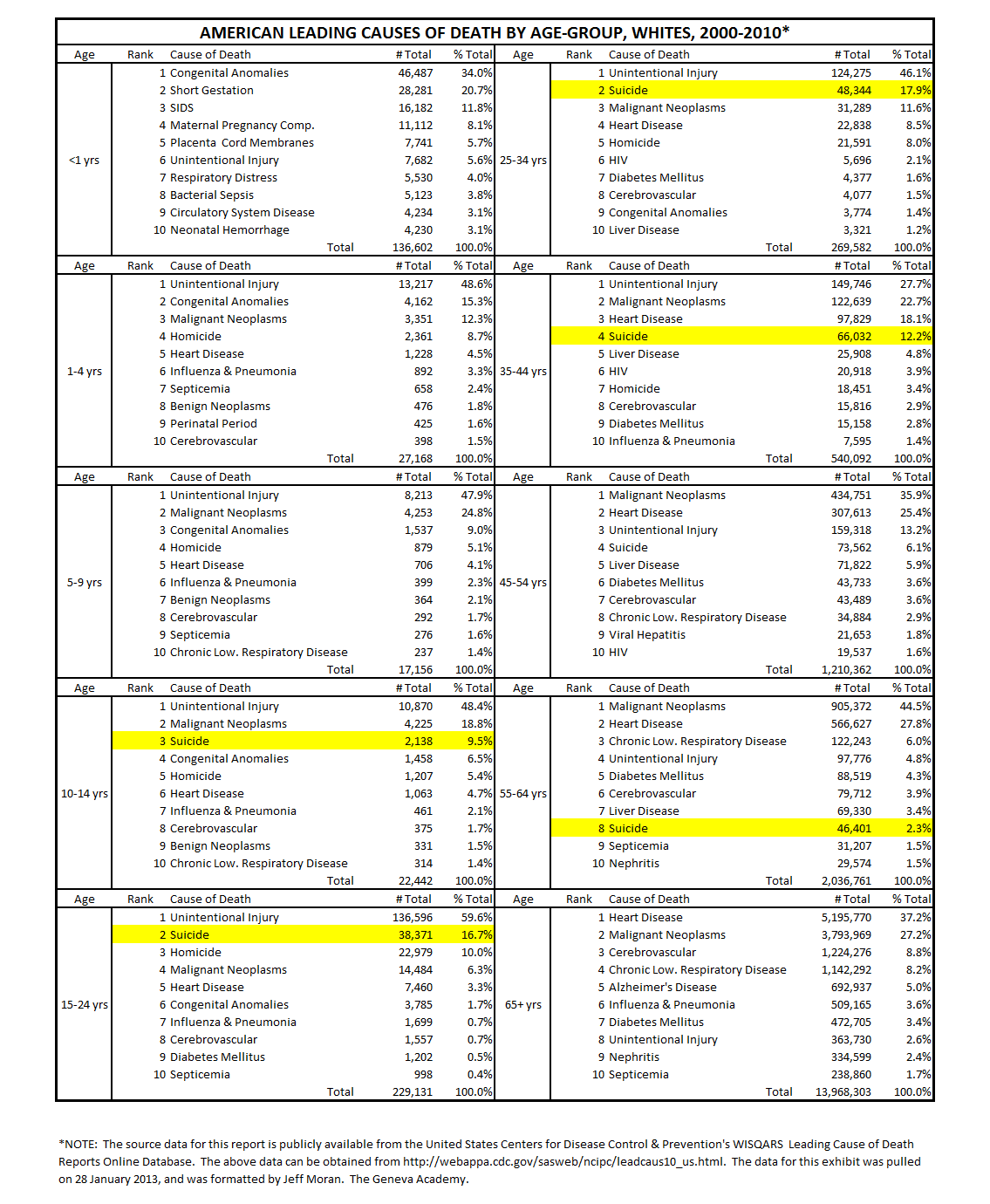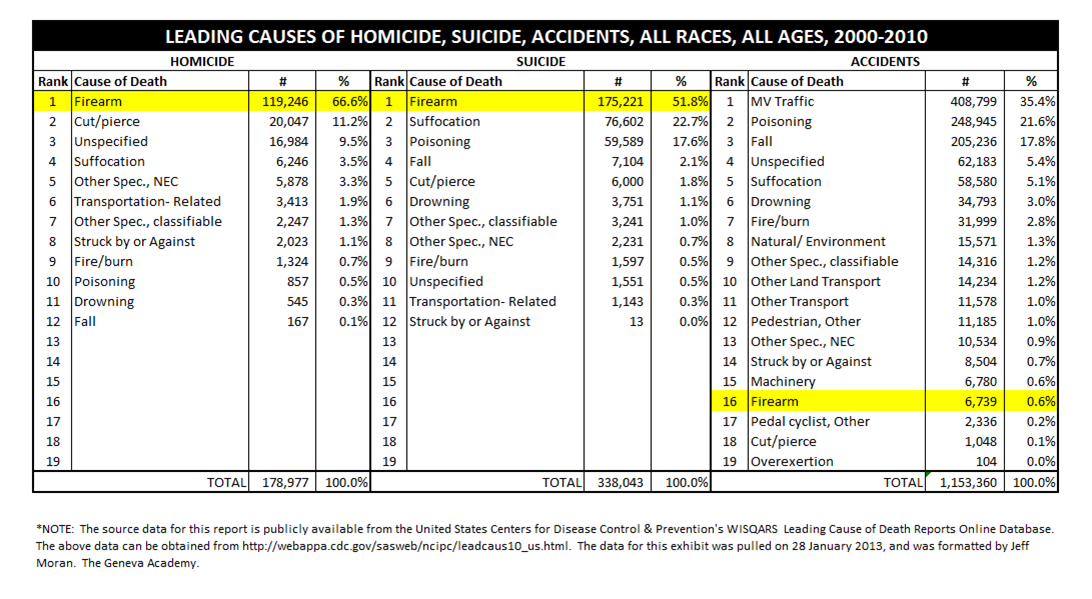Civil arms rights activists, modern shooting sports enthusiasts, and the shooting industry should push policymakers to reframe their post-Newtown agenda in light of successful evidence-based behavioral crime prevention strategies and related analysis.
By Jeff MORAN | Geneva
1. Policymakers clearly need help seeking new ways to curb armed violence in America. The focus on blanket solutions is neither popular nor practical, and is apparently going nowhere. The path ahead must be predicated on proven practices in law enforcement and crime prevention, and analysis of official statistics. The intent of this article is to provide arms rights activists, shooting enthusiasts, and the industry some ideas to share with their local policymakers. The article first conveys key messages about armed violence and proven behavioral based crime prevention strategies. It then summarizes key findings, implications, and take-aways from statistical analysis of official American data by this author.
2. Perhaps the most important messages for policymakers is that scholarship and successful field work shows that armed violence does not spread epidemically nor follow a disease model, and that blanket approaches to gun violence (e.g. categorical gun bans, universal policies) are inherently misguided. This is evidenced by the “Boston Miracle” engineered by award winning criminologist David Kennedy, then of the Kennedy School of Government at Harvard University.
2.1. During the 1990s David Kennedy led the Boston Crime Reduction Project, which resulted in a serious and sustained reduction in gun violence among Boston’s youth, which has since been adopted by over 50 cities in the United States. This project is profiled by the US Department of Justice’s Office of Juvenile Justice and Delinquency Programs for its sustained effectiveness. David Kennedy is now the Director of the John Jay Center for Crime Prevention and Control and author of several books, the most recent of which is Don’t Shoot: One Man, A Street Fellowship, and the End of Violence in Inner-City America. Mr. Kennedy is trying to create a national movement of rational and behavioral crime prevention strategy. Mr. Kennedy’s policies actually align with the interests of guns rights activists, shooting sports enthusiasts, and the shooting industry because they presuppose that gun bans, for example, don’t work.
2.2. The main take-away from Kennedy’s work is that armed violence, rightly understood, tends to concentrate or follow along particular social networks that are involved in often illicit activities. The implication is that reducing gun violence absolutely must be based on tailored and customized interventions that focus on who is affected, where, and under what circumstances, and for what reasons. According to Kennedy, the approach should not be about new gun controls because they are clearly ineffective. Rather, the proven approach should be to first analyze local criminal populations and identify the very small percentage (usually less than 5%) that tend to be responsible for overwhelming majority of gun deaths, and then target those criminals with very direct and individual interventions to change their behavior. The key is that interventions must be clear, immediate, and have credible consequences. You can find links to learn more about David Kennedy’s idea here.
3. Study of official American statistics on weapons usage and causes of death shows that the problem of armed violence is not a gun availability or gun choice problem as much as it is an individual behavioral problem as well. Analysis of FBI data published by the Criminal Justice Information Service Division and CDC data published in the Web-based Injury Statistics Query and Reporting System illustrate why.
3.1 Here are five high-level findings from the most current FBI data with respect to American homicides and weapons use from 2006-2010 (See Exhibit 1 for reference table):
3.1.1. The share of homicides due to all types of firearms combined has not increased, it has actually decreased. This contrasts with the fact that homicides due to sharp objects, blunt objects, and the human body have each increased over time.
3.1.2. The sharp object (e.g. a knife) is the 2nd most lethal weapon in the United States. The sharp object is used in 13% of all homicides, and its share of all homicide is up.
3.1.3. The human body (e.g. hitting, pushing, kicking) is the 5th most lethal weapon in the United States. The human body is the cause of death for 6% of all homicides, and its share of all homicide is up.
3.1.4. The blunt object (e.g. hammer, club) is the 6th most lethal weapon in the United States. The blunt object is used in 4% of all homicides, and its share of all homicide is up.
3.1.5. The rifle and shotgun are the 7th & 8th most lethal weapons respectively. The rifle and shotgun are each used in 3% of all homicides, and their share of all homicide is down.
3.2. Here are ten high-level findings from CDC data with respect to gun related homicides, suicides, and accidents from 1993-2009 (See Exhibits 2-9 for reference charts and tables):
3.2.1. The rates of gun-related homicide, suicide, and accidental death have decreased nearly 50%, 15%, and 70% respectively since 1993 (for all races, ages).
3.2.2. After declining substantially over 10 years, gun suicides rates have significantly increased each year since 2006 (for all races, ages).
3.2.3. Since 1993 the rate of gun suicides has been higher than both gun homicides and accidental gun deaths combined (all races, ages).
3.2.4. The ratio of gun suicides to gun homicides for white Americans is 3.1 to 1 and is the highest across all races with whites aged 15-34 being most at risk.
3.2.5. Americans aged 15-24 are the most at risk for gun homicide but the ratio of gun homicides to accidental deaths for this group was just 1 to 3 (all races).
3.2.6. The majority of American gun homicides (54%) take the lives of black Americans, who constitute less than 14% of the total population.
3.2.7. Homicide is the leading cause of death only for black Americans aged 15-34, with 87.4% of all homicides for this group caused by guns.
3.2.8. The ratio of gun homicides to gun suicides for black Americans is over 6.1 to 1, but for non-black Americans it is just 1 to 3 (nearly a 20X difference).
3.2.9. The ratio of gun homicides to deaths from flu/pneumonia for black Americans is 1.1 to 1, for non-black Americans, it is just 0.1 to 1 (a 10X difference).
3.2.10. The ratio of gun homicides to accidental death not due to firearms for black Americans is .50 to 1, for non-black Americans, it is just .05 to 1 (a 10X difference).
3.3. Here are six implications:
3.3.1. The share gains of non-firearms and share losses of firearms within the “homicide market” from 2006-2010 suggests the “guns and gun availability is the problem now” hypothesis is invalid.
3.3.2. Legislative proposals that focus on banning certain types of firearm, especially rifles and shotguns, do not appear to be warranted since such weapons are decreasingly used and demonstrably less lethal than sharp objects, blunt objects, or the human body across civil society as a whole.
3.3.3. The problem is not universal and solutions should not be either. What is needed are tailored approaches, customized to the most at risks individuals. With respect to firearms, this would be whites aged 15-34 at risk of suicide, and blacks aged 15-34 at risk of homicide.
3.3.4. That the human body is demonstrably more lethal in American civil society than rifles and shotguns combined clearly means that banning certain semi-automatic long-arms will have little if any impact on homicides nationally.
3.3.5. The root cause of homicide is an individual behavior and choice issue, and clearly not just a gun availability or gun choice issue. Policy responses should be focused more on incentivizing or nudging individuals away from the choice to kill well before they consider their weapon.
3.3.6. Politicians would be well advised to look deeper at the problem of homicide, look upstream as to the causes, and prioritize efforts to develop result-focused behavioral intervention strategies over weapons access or weapons choice removal strategies.
4. Here are four key take-aways for lawmakers and policymakers:
4.1. Pursuing policies like universal background checks and gun bans are not advisable. Such one-size-fits-all policies could be highly vulnerable to judicial invalidation aside from being practically off-target. Broad policies would likely have little if any significant net impact on those most at risk.
4.2. Policy decided or chosen without reasonable grounds or a rational connection to facts, let alone without appropriate respect for the implications of strict scrutiny and enumerated rights, would likely be successfully challenged as arbitrary, capricious, and unconstitutional.
4.3. Lawmakers should therefore carefully temper their response to recent American tragedies. From a humanitarian viewpoint, it is recommended lawmakers insist on rigorous analysis of relevant data to focus, and to set policy by starting with desired outcomes and planning backwards.
4.4. Award winning best practices in the field and analysis of CDC and FBI data suggests the highest policy priority should be for new and improved laws addressing behaviors and disincentives for resorting to violence within American civil society, not guns per se. Policy making should entail targeting, tailoring, and customizing policies, outreach, civic organizing and engagement of the most at-risk individuals: black and white Americans aged 15-34 years.
5. In conclusion, while some politicians clearly don’t care about facts and what works, many of them are reasonable and want to do the right thing. Arms rights activists, shooting sports enthusiasts, and trade groups would do well to help inform these policy makers about proven best practices and relevant official statistics, and the salient findings, implications, and take-aways. To the extent these policy makers understand and appreciate this information, pro-gun stakeholders can help to actively reshape the post-Newtown debate from being about general weapons choice and availability and more about the the primary human behavioral variable. Ultimately, if America is ever to really move the needle on reducing gun violence, politicians and policymakers must stop ignoring the essential human variable in the gun violence equation.
Exhibits









Primary Sources
1. http://www.fbi.gov/about-us/cjis/ucr/crime-in-the-u.s/2010/crime-in-the-u.s.-2010/tables/10shrtbl08.xls, last accessed 2 Feb 13
2. http://www.cdc.gov/injury/wisqars/index.html, last accessed 2 Feb 2013
About the Author
Jeff Moran studies international humanitarian law and human rights at The Geneva Academy in Switzerland. He will complete his executive LL.M. focused on international weapons law and disarmament later this year. Mr. Moran is also a specialist in the defense, security, and shooting sports industry at TSM Worldwide LLC. Mr. Moran is formerly a military diplomat, aerospace/defense industry marketing leader, and independent consultant to firearms distributors. Mr. Moran has a Bachelor of Science in Foreign Service from Georgetown University, a Master of Business Administration from Emory University, and an Executive Master in International Negotiations & Policy Making from The Graduate Institute of International and Development Studies in Geneva.
First Published: 2 April 2013
Last Updated: 2 April 2013
Distribution Notice
Online republication and redistribution are authorized when this entire publication (including byline, hyper-links, About the Author and End Note sections) and linkable URL https://tsmworldwide.com/reducing-gun-violence/ are included. See other published items at https://tsmworldwide.com/category/published/
